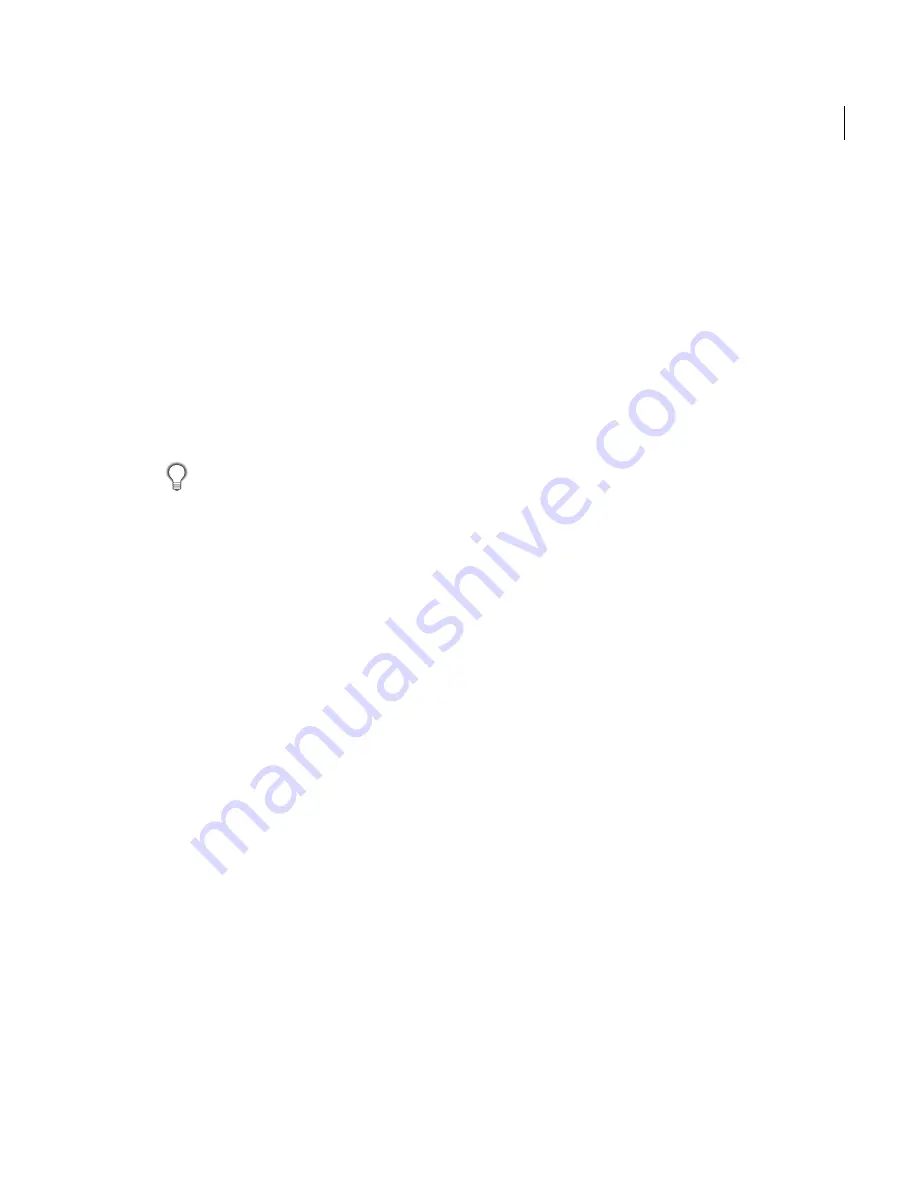
167
ADOBE PHOTOSHOP ELEMENTS 2.0
User Guide
4
To set filter options and preview the filter, select
Filter Options at the top of the Filters palette. Or,
to apply the preset filter settings deselect Filter
Options. (Filter Options and preview windows are
not available for all filters.)
5
To apply the filter to your image, double-click
the filter, drag the filter into the image, or click
Apply in the Filters palette.
6
If a dialog box appears, enter values or select
options. (Read more about each filter and setting
filter options later in this chapter.)
To start over, and reset the filter options, press
the Alt (Windows) or Option (Mac OS) key,
and click Reset in the dialog box.
7
If available, select the Preview option to preview
the filter effect in the document window. Use one
of the following methods to preview the effect:
•
Use the + or – button under the preview
window to zoom in or zoom out on the preview.
•
Drag in the preview window to center a specific
area of the image in the window.
Note:
A flashing line beneath the preview size
indicates that the preview is being rendered.
8
Click OK to apply the filter.
In some cases, a progress indicator marks the time
remaining until the filter is applied.
Defining undistorted areas
The Displace, Shear, and Wave filters in the Distort
submenu and the Offset filter in the Other
submenu let you treat areas undefined by the filter.
See “Transforming layers, selections, and shapes”
on page 153 for more information.
Using texture and glass surface controls
The Conté Crayon, Glass, Rough Pastels,
Texturizer, and Underpainting filters have textur-
izing options. These options make images appear
as if they are painted onto textures such as canvas
and brick or viewed through glass blocks.
To use texture and glass surface controls:
Do one of the following:
•
Choose the filter from the appropriate submenu
in the Filter menu.
•
Use the Filters palette to apply the desired filter
(make sure Filter Options is selected in the
Filters palette before you apply the filter).
1
For Texture, choose a texture type or choose
Load Texture to specify a Photoshop file.
2
Drag the Scaling slider to enlarge or reduce the
effect on the image surface.
3
Drag the Relief slider (if available) to adjust the
depth of the texture’s surface.
4
For Light Angle (if available), choose the
direction of the light source on the image.
5
Select Invert to reverse the surface’s light and
dark colors.
6
Click OK.






























